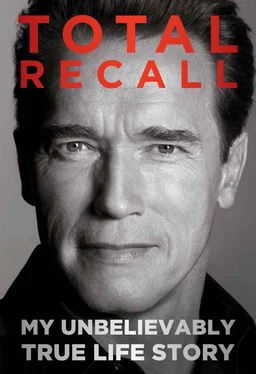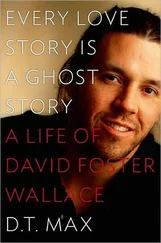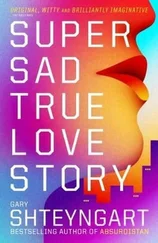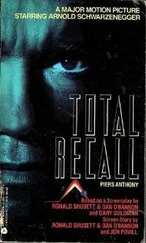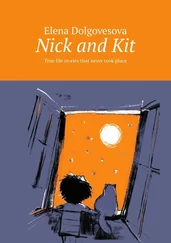Since his visit to San Francisco in 2007, Ban had watched with great interest as California built broader and broader coalitions with other US states and “subnational” players abroad. The Western Climate Initiative, our regional cap-and-trade program for carbon emissions, had expanded to include seven US states and five Canadian provinces. And our second Governors’ Global Climate Summit in late 2009 drew governors and provincial leaders from six continents in spite of the world recession.
This subnational climate change movement had built bridges to the developing world. Washington and Beijing on a national level were still in a stalemate over climate issues, but they were willing for us to form region-to-region connections. California had already made agreements with the city of Shanghai and several of China’s most industrialized provinces aimed at reducing greenhouse gases and cooperating on projects in solar and wind power and electric buses and high-speed rail.
As news got around about these developments, people in the environmental community began to sense a giant opportunity here. Ban Ki-moon was receptive when I pitched California’s approach as plan B for Copenhagen, to supplement the main UN effort to address climate change. “Even if the negotiations hit an impasse,” I argued, “the conference doesn’t have to look like a failure. You can say that although the national governments are stuck, we have great successes over here on the subnational front, and we’re going to continue the fight.”
_
All great movements in history—civil rights, women’s suffrage, the campaign against apartheid, worker safety—start out on a grassroots level, not in places like Washington or Paris or Moscow or Beijing. That was my inspiration in trying to cope with climate change. For instance, when we cut our pollution by 70 percent at the Port of Long Beach, the second-busiest seaport in America, Washington didn’t tell us to do it. We did it ourselves. We passed laws that forbid trucks from idling, and gave truckers tax incentives to switch over to electric engines and clean diesel and hybrids. In the same way, California built the Hydrogen Highway (a chain of refueling stations for hydrogen-powered vehicles), launched the Million Solar Roofs program, and committed to cut its greenhouse gas emissions radically, all without waiting for Washington. So if we could create a groundswell of such projects around the world, getting people involved, getting companies involved, getting cities involved, getting states involved, national governments could then respond.
That was the idea I took to the national leaders assembled in Copenhagen. We held a press conference after the speech, but at a separate hotel from the conference, to dramatize the message: “While the national governments are meeting over there, we are here. You should pay close attention to us as well as to them. Not to us instead of them, because we are supporting players and they are the stars. But without the supporting players, they are not going to get it done.”
As the pessimists had predicted, no binding agreements were reached at the Copenhagen summit. President Obama dominated the headlines, with his dramatic personal intervention and his effort to hammer out an eleventh-hour accord with China, India, South Africa, and Brazil. Our initiative was not enough to change the course of events, but it did add a crucial new dimension to the debate. Ban Ki-moon and I became good friends, and in the following year, we teamed up to seek new ways for subnational governments to take climate change policy forward.
President Obama and I became friends too. Shortly after his 2008 election night victory, I congratulated him in a speech before a Republican audience, saying that I hoped he would be a successful president because Californians would benefit from effective national leadership. Knowing that I wanted to cooperate with him, President Obama invited me to the White House, and we developed a strong working relationship. He knew about my bipartisan record and the goals we shared on the environment, immigration, health care reform, and infrastructure, and that I could be trusted not to take potshots at him once I left his side. He greeted me with a hug. Our conversations were relaxed and full of humor, even though we were both facing dreadful economic challenges: a recession, high unemployment rates, huge deficits.
_
In the public opinion polls, my approval rating was down to 28 percent, reflecting the widespread unhappiness and misery about the economy. At least it wasn’t as low as the legislature’s approval rating of 17 percent. I had a choice. I could go along to get along and try to improve my poll numbers, or I could continue fighting hard to fix what was broken in Sacramento and watch my approval ratings kiss the floor. I chose to fight. Unlike regular politicians, I had nothing to lose. I had only a year left in my governorship, and I was barred by term-limit laws and the Constitution from seeking another term or the presidency.
Six years of ups and downs forged me as a governor the way Conan was forged by pit fighting and the Wheel of Pain. I now understood politics and government, and in spite of all the struggles and the recession and low approval ratings, I had more forward momentum than ever before. I felt more like a hungry eagle rather than a lame duck.
In 2010 I managed to achieve some important goals. I persuaded the legislature to once again adopt a sweeping budget reform measure establishing spending limits and a rainy-day fund. This was my final chance to fix a broken budget system. The measures passed in 2004 were good for starters but weren’t big enough to fix the system. The most carefully crafted, bipartisan measure passed by the legislature in 2009 got killed by the voters because it was tied to the “grand compromise” that included temporary tax increases. This time—the last, best chance we had to stop the crazy deficit spending once and for all in Sacramento—I convinced a worn-down legislature to put the measure back on the ballot (without the hated tax increases), even though it wouldn’t be voted on until after I left office. I vowed to raise the money to get it passed by the voters come hell or high water. I was disappointed when I learned that my successor, Governor Jerry Brown, signed a bill to remove those reforms from the 2012 ballot at the behest of Democrats and labor unions. The polls had shown it headed for a landslide victory this time, with 84 percent planning to vote yes, according to the reform group the Think Long Committee for California. In the end, politics as usual produced a tax increase with no real safeguards to restrict further spending. And now the budget reform initiative will not be voted on until 2014.
In the fall, I signed a historic pension reform that rolled back some of the worst excesses threatening to bankrupt the state. By cutting a lot of red tape, we issued permits for so many solar power plants in California—more than 5,000 megawatts in 2009 alone (one hundred times all the solar permitted in the United States a year earlier)—that California was being called the Saudi Arabia of Solar. California is now on track to build not just the most but also the largest solar projects in the world. I clinched agreement with the federal government and the state of Oregon to remove dams on and near the Klamath River, the largest dam removal and river restoration in US history. We adopted the nation’s first Green Building Standards requiring all new buildings in California to meet strict energy efficiency and sustainable development standards.
In 2010 I also teamed up with the NAACP and President Obama’s education secretary, Arne Duncan, to win a huge victory on education reform, giving parents the right to move their children out of failing schools. The teachers’ unions and school administrators fought vehemently against these reforms, but the bipartisan force of a Republican governor teaming up with a Democratic president and the premier civil rights group in the country was too much even for the most powerful labor union in the state.
Читать дальше
